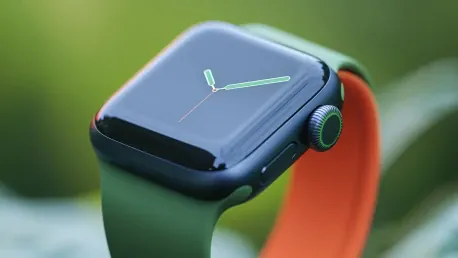For many Apple Watch users, the excitement of owning one of the most advanced smartwatches on the market turned sour when a battery issue caused significant problems. A recent settlement agreement worth $20 million has been reached by Apple to address these swollen battery problems that plagued certain Apple Watch models. The main consequence of the battery swelling was screen detachment from the watch body, which, unsurprisingly, posed a safety hazard to users due to shattered glass. While this settlement marks a notable milestone in consumer protection, the road to compensation is not without its intricacies.
Most notably, the settlement applies to a range of Apple Watch models, specifically the first-generation (Series 0), as well as Series 1, Series 2, and Series 3. Apple Watch owners affected by this issue can now begin to claim their share of the settlement fund, provided they meet the eligibility criteria. The terms necessitate proof of a qualifying Apple Watch model and documented reports of battery swelling filed with Apple. This development means that a significant number of Apple Watch users who were once left with defective devices now have a path to some form of financial reprisal.
The Specifics of the Settlement
In tackling the details of the settlement, it’s important to understand how Apple has structured the compensation process. Affected users can opt for various payment methods, including physical checks, electronic checks, ACH transfers, or virtual prepaid Visa or MasterCard options. The payout, while promising, is not expected to be large, with estimates indicating the average compensation might be between $20 to $50 per claimant. However, this amount could vary depending on the number of claims filed, as the total settlement fund is capped at $20 million.
A share of this fund will also cover legal fees, meaning that the actual amount disbursed to each claimant could be less than what might be anticipated. Eligible class members will receive postcards providing detailed instructions and must declare their preferred payment method by April 10, 2024. For those who prefer alternative legal routes, there is an option to opt out of the settlement, with a deadline for doing so set for February 24, 2024. This structured approach aims to streamline the process, offering a more efficient resolution for those affected by the swollen battery issue.
Becoming Eligible for Compensation
Eligibility criteria play a crucial role in determining who gets compensated under this settlement. For one to be considered an eligible class member, they must have used an affected Apple Watch for personal or household purposes within the specified period, which spans from April 24, 2015, to February 6, 2024. Additionally, they must have experienced and reported the battery swelling issue to Apple during this timeframe. The reporting element is particularly significant as it establishes a documented history of the defect, thereby validating claims for compensation.
The notification process involves sending postcards to those identified as potentially eligible class members. These individuals must then act promptly to provide their preferred payment method, ensuring they do not miss the April 10, 2024, deadline. While the sums involved might not be substantial, the importance of these payments lies in the acknowledgment of the inconvenience and potential injury risk faced by affected users. Apple had consistently denied any widespread battery problems, but this settlement serves as a formal acknowledgment of the issues experienced by many users.
Significant Outcomes and Moves Forward
The recent developments have shone a spotlight on Apple’s handling of product defects and customer grievances. Apple maintains that they have never admitted to a widespread battery issue; nonetheless, the settlement brings some form of solace to those who experienced complications with their devices. This scenario serves as a vital reminder for manufacturers about the importance of addressing consumer complaints promptly and transparently. For the tech giant, this episode underscores the need for rigorous quality control and a more responsive approach to potential product defects.
While the financial compensation may seem modest, the broader implications for consumer advocacy cannot be overstated. The resolution of this case highlights the growing importance of holding companies accountable for their products’ reliability and safety. Going forward, affected users should ensure they adhere to the settlement deadlines, while other consumers might become more vigilant about reporting any issues with their devices. The resolution of this particular matter, although closing the chapter on swollen Apple Watch batteries, opens up broader conversations about consumer rights and corporate responsibility.
Future Considerations
For many users, the thrill of owning an Apple Watch, one of the market’s most advanced smartwatches, soured due to a significant battery issue. Apple reached a $20 million settlement to address the swollen batteries that caused serious problems in certain Apple Watch models. The primary consequence of the swelling batteries was that the screen would detach from the watch body, creating a safety hazard due to broken glass. This settlement is a significant step in consumer protection, but the path to compensation involves some complexities.
The settlement specifically applies to first-generation (Series 0), Series 1, Series 2, and Series 3 Apple Watch models. Owners of these affected models can claim their share of the settlement fund if they meet certain criteria. To qualify, owners need to provide proof of ownership of an eligible Apple Watch model and documented reports of battery swelling submitted to Apple. This means that a substantial number of Apple Watch users who were left with faulty devices now have a route to some form of financial compensation.









